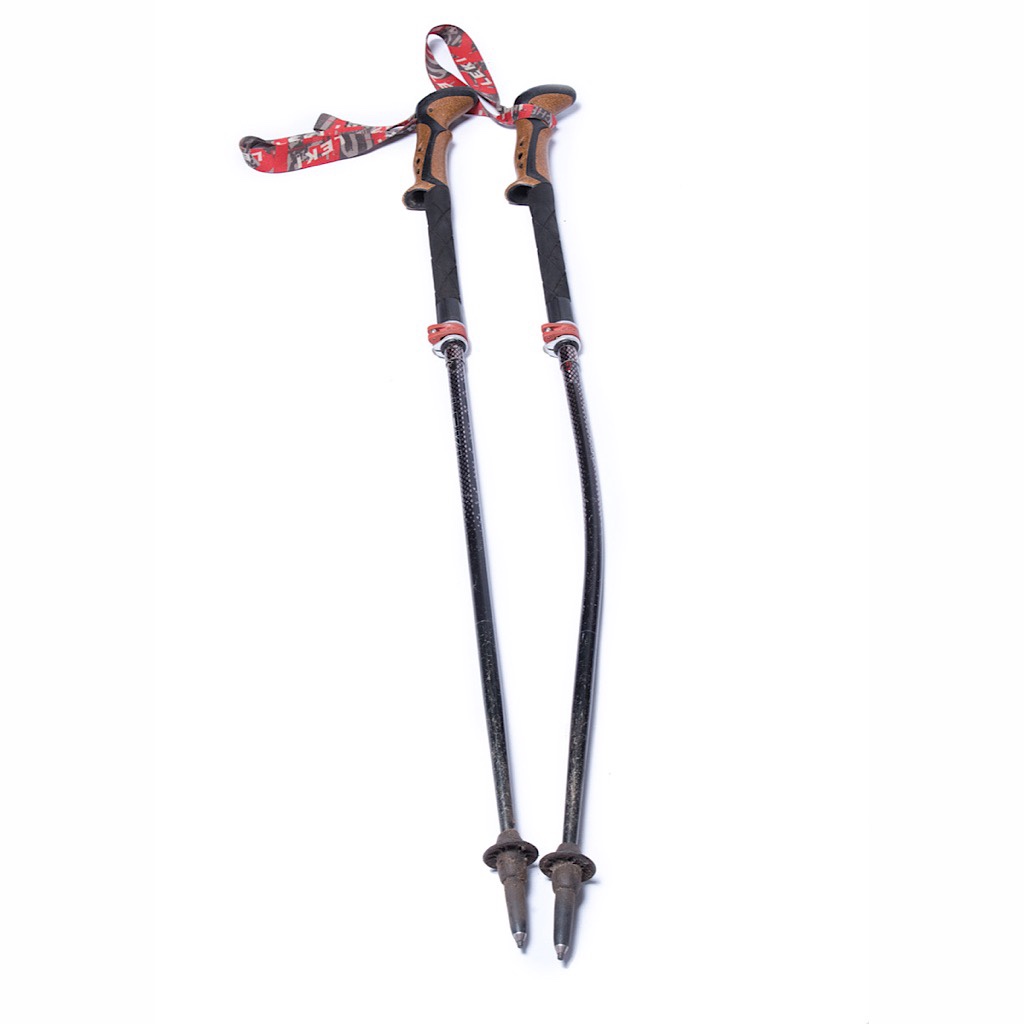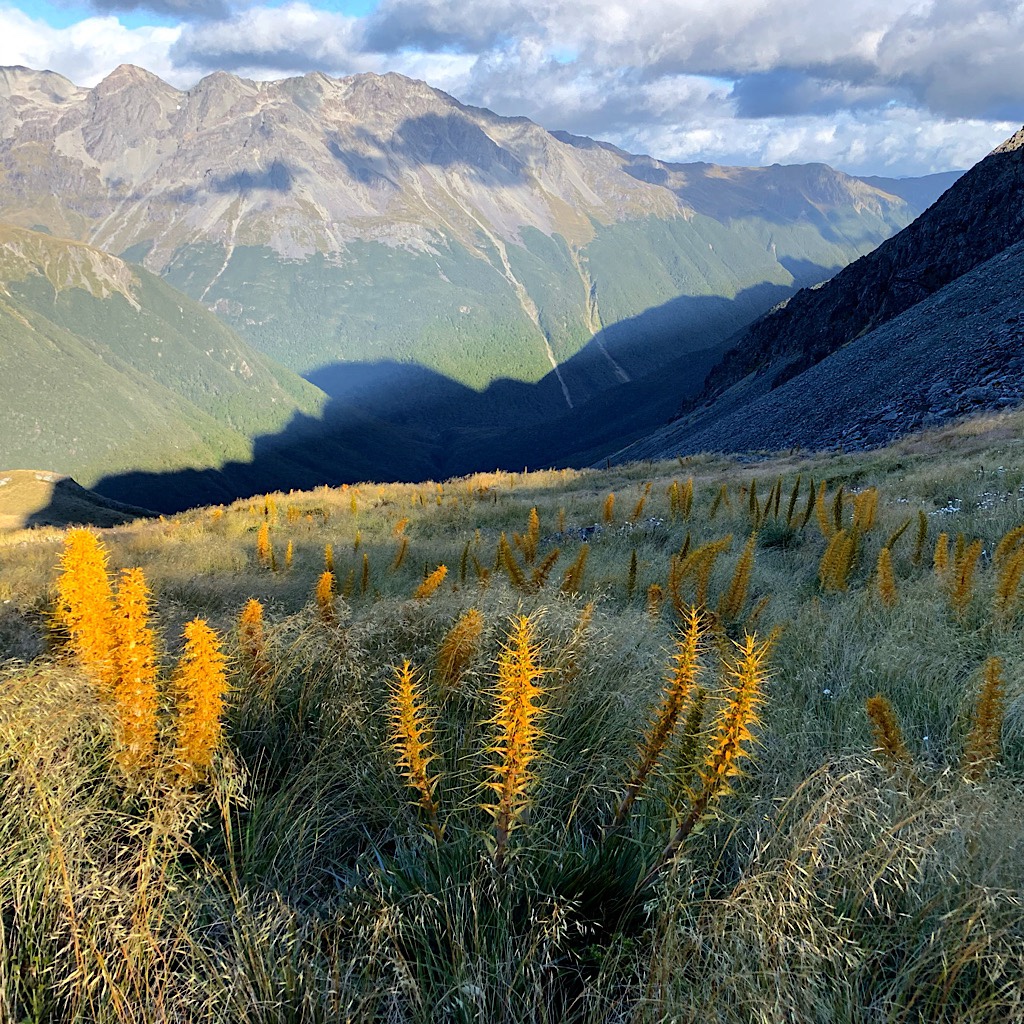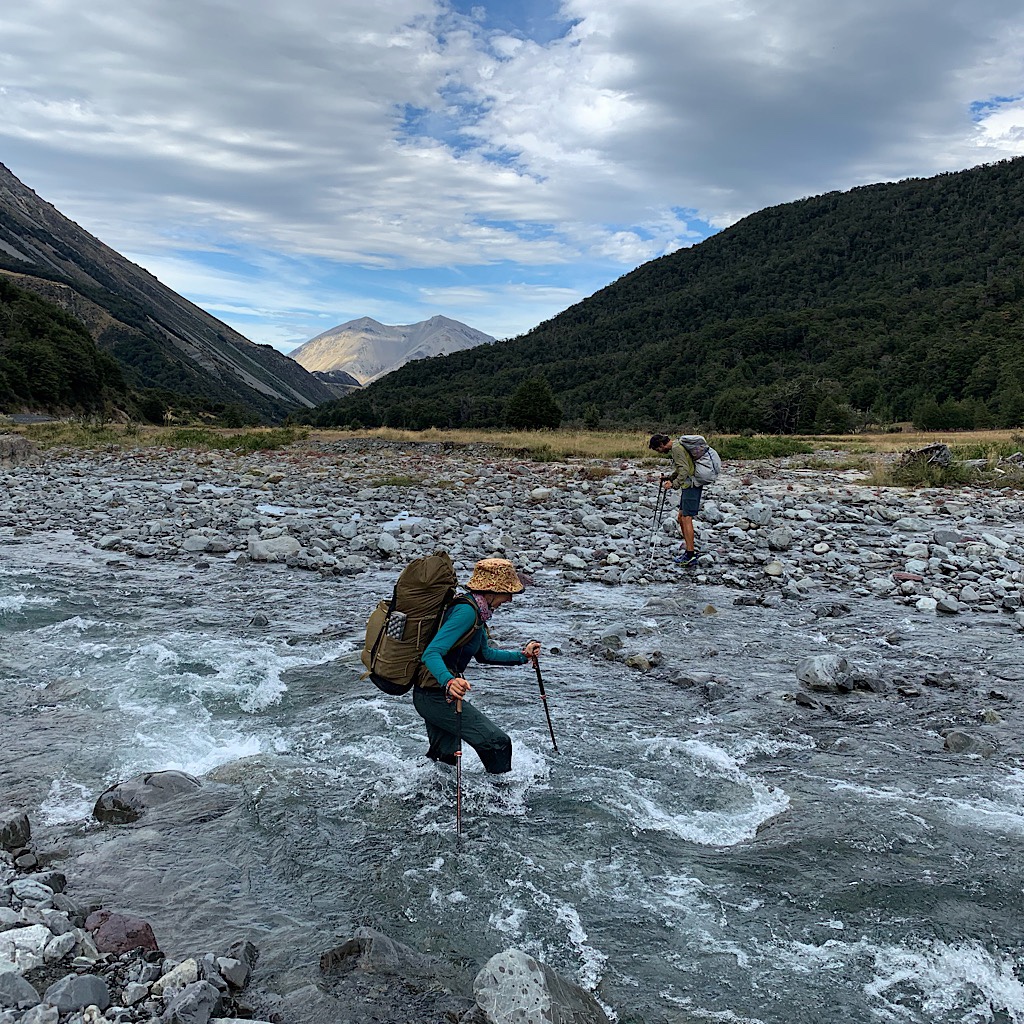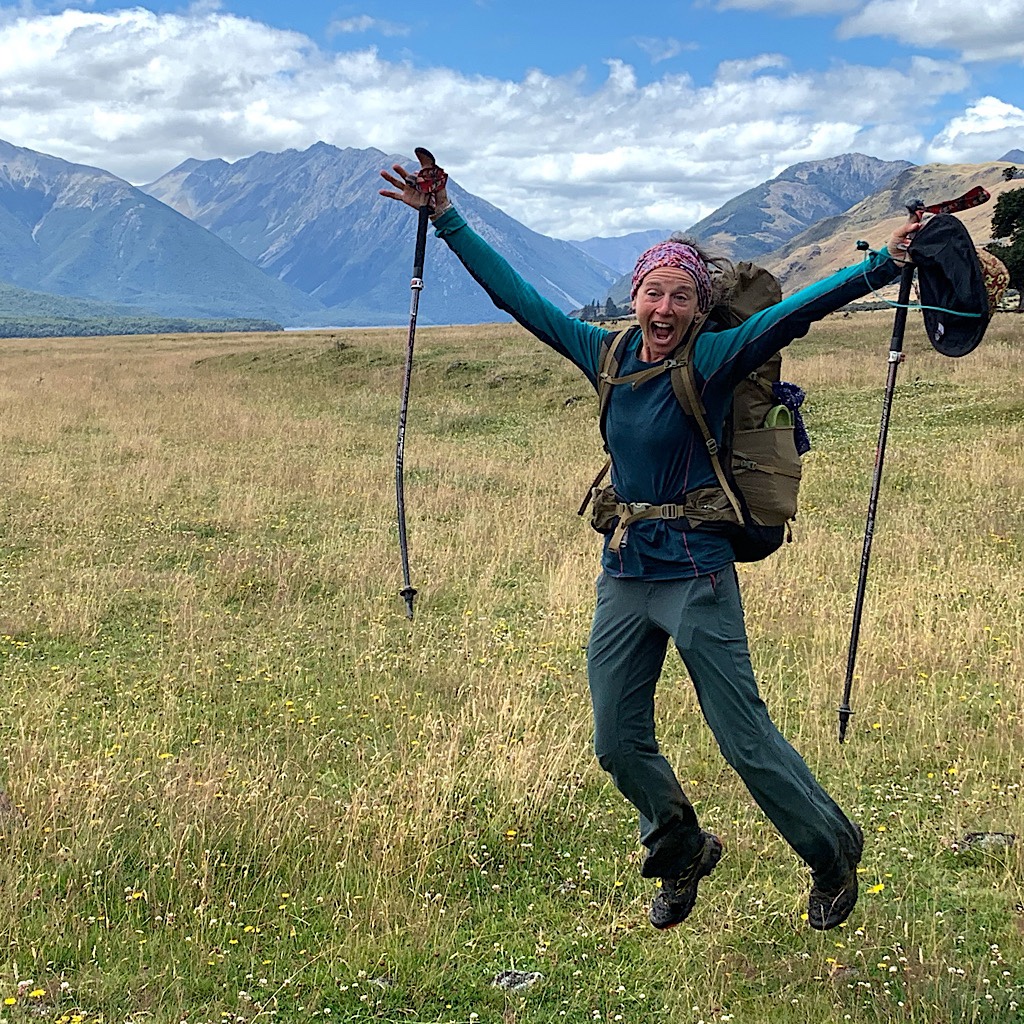

Photo credit: Neil Macbeth
Gusts were at “extreme gale” in exposed areas and squally showers blew sideways the day I crossed Nelson Lakes National Park’s Traverse Saddle in New Zealand’s South Island. I made it to the top with enough clear sky to shoot a selfie even if I was barely able to stand.
Going down, per usual, was far more difficult than going up as I picked my way over a slippery stretch next to an avalanche path. The wind lessened as I descended, but the path stayed hidden in tussock, muddy and strewn with loose rocks.
And then, I fell.

It was a spectacular fall, I must admit. I slid backwards, tumbling on my side before careening head first to finally end up facing downhill before coming to an abrupt stop. Once the initial shock wore off, I assessed the damage. I hadn’t hurt myself – no broken bones, sprains, not a scratch or bruise. So I brushed off the mud and hoisted myself up to standing with the help of my Lekis.
That’s when I realized the damage was not to my person, but to one of my poles, bent significantly in a sharp curve worthy of Dizzy Gillespie.
Here I was way out from civilization, about as remote as the Te Araroa was going to get. I had no way to replace the pole anytime soon and I really needed them to continue hiking safely.

Running out of options, I gave the damaged pole a try, placing my weight on it bit by bit as I attempted to continue my gnarly descent. It held and it was only a matter of time – and practice – on the remaining 12 k that day before I got used to walking with a deformed stick at my side. Even so, I promised myself that if and when I got out of there, I’d find myself a new pole.
Getting “out of there” meant another day of huge climbs and descents, and my huge need for my Lekis to keep me upright.
So it was much to my delight, that it wouldn’t turn out to be necessary to find a new pole. My Leki Micro Vario Ti Cor-tec pole (full review and specs) stayed strong, stable and reliable not just for the next few mountain passes, but for the remainder of the TA plus Stewart Island and the Kepler Track. It even continued to work beautifully as my tent support.
Emblazoned on the side of the Micro Vario is this tagline: “hyper strong, super light.” Maybe it’s just one of those out-of-the-committee, groupthink marketing slogans, but in this case it appears there’s truth in advertising. I bought aluminum poles rather than carbon because they feel light enough to me and also because I’ve watched my carbon-carrying pals in similar circumstances end up with shattered and useless poles rather than simply bent.

I did have a few issues with the pushpin mechanism which sometimes stayed stuck as an “innie.” To get it back in its “outtie” position, I’d simply poke it with something pointy until it popped into place and held. That being said, there was not one moment I didn’t trust my Lekis during some of the hardest hiking I have done in my life on exceedingly steep terrain, seemingly endless mud and roots, epically treacherous sidling and across countless fast-moving rivers.
That is why I give Leki poles my highest rating – Five Anitas. I will not take another step without them in my hands.
Leki poles? She’s gotta have ‘em.



One Response